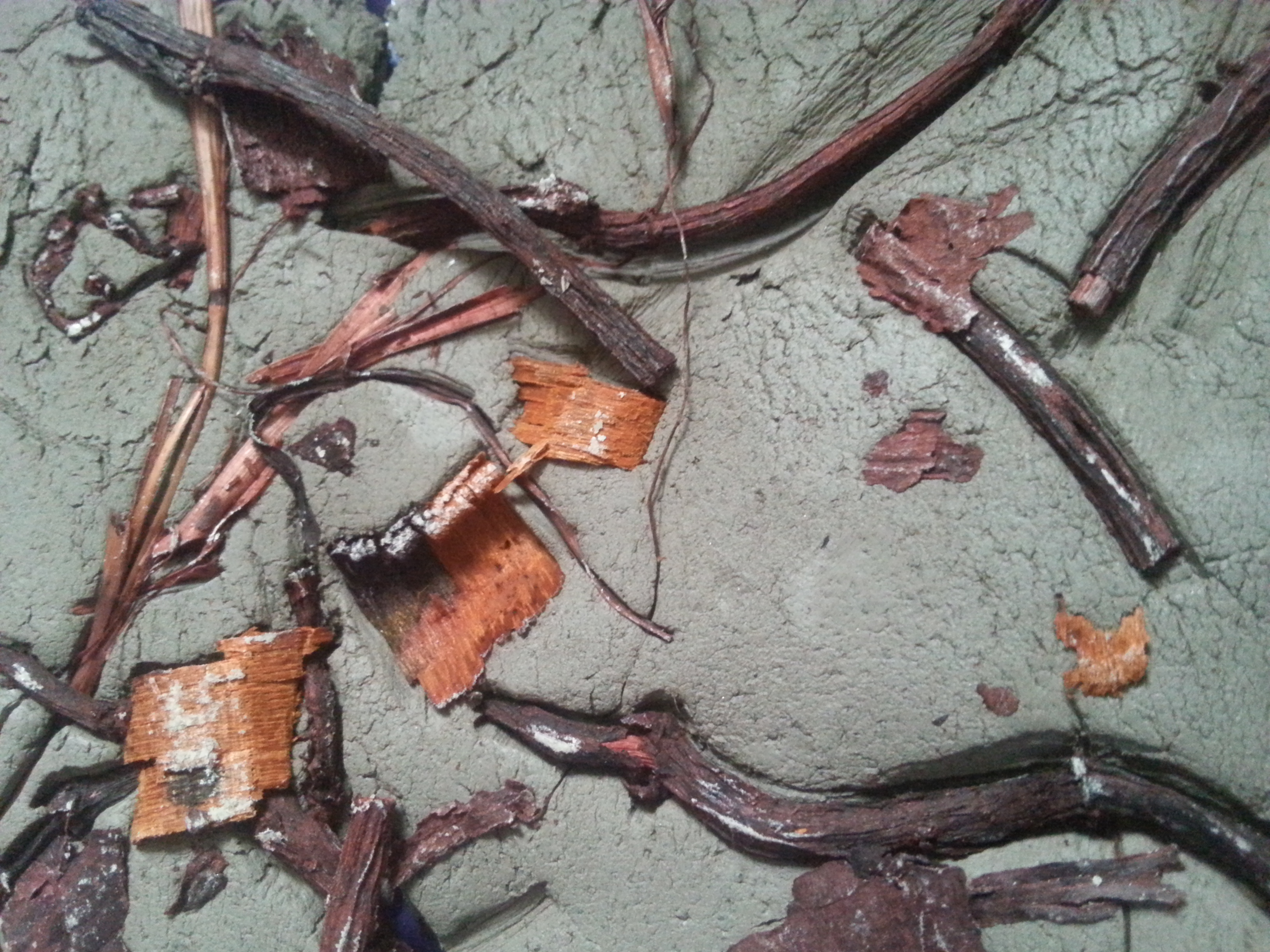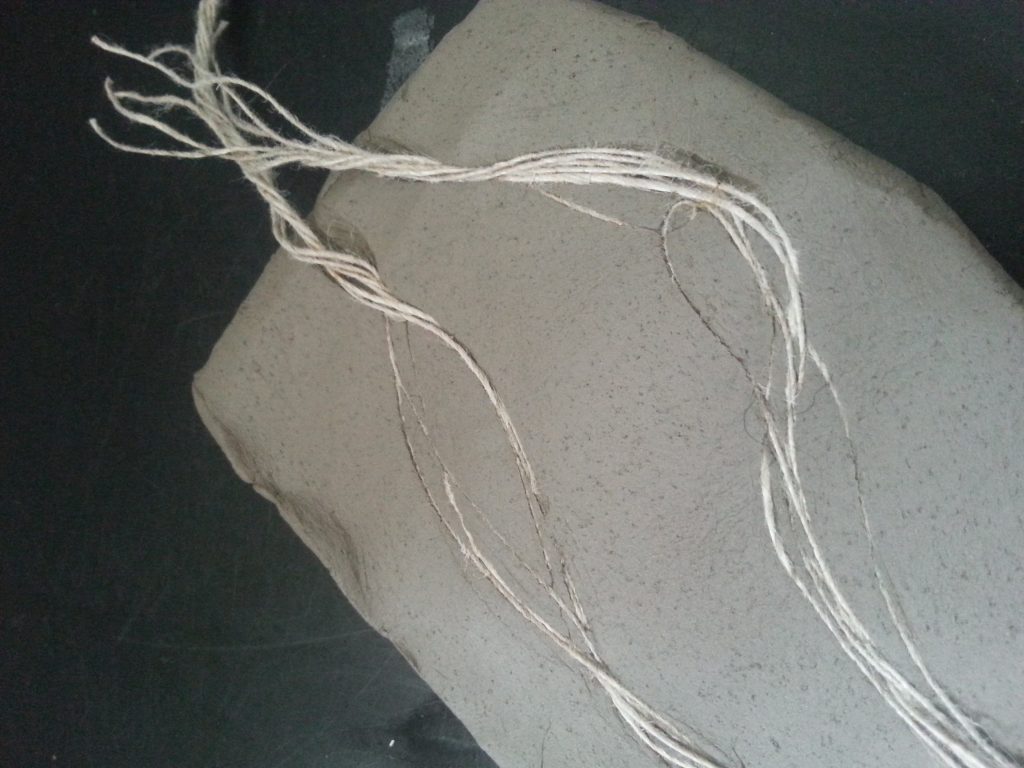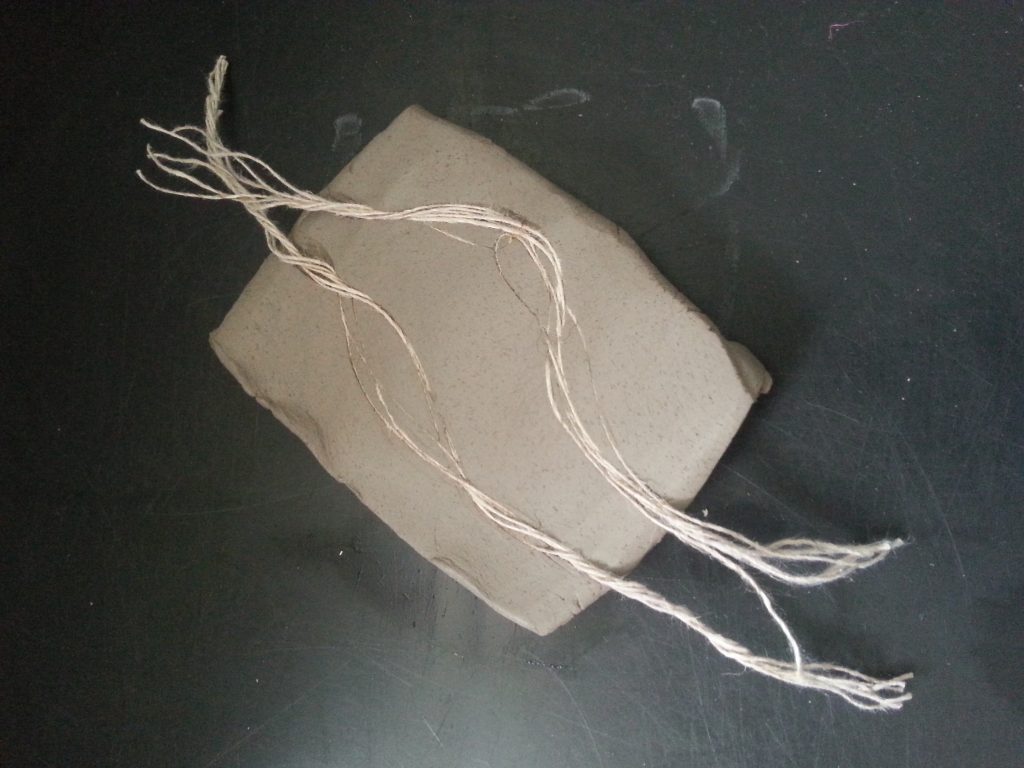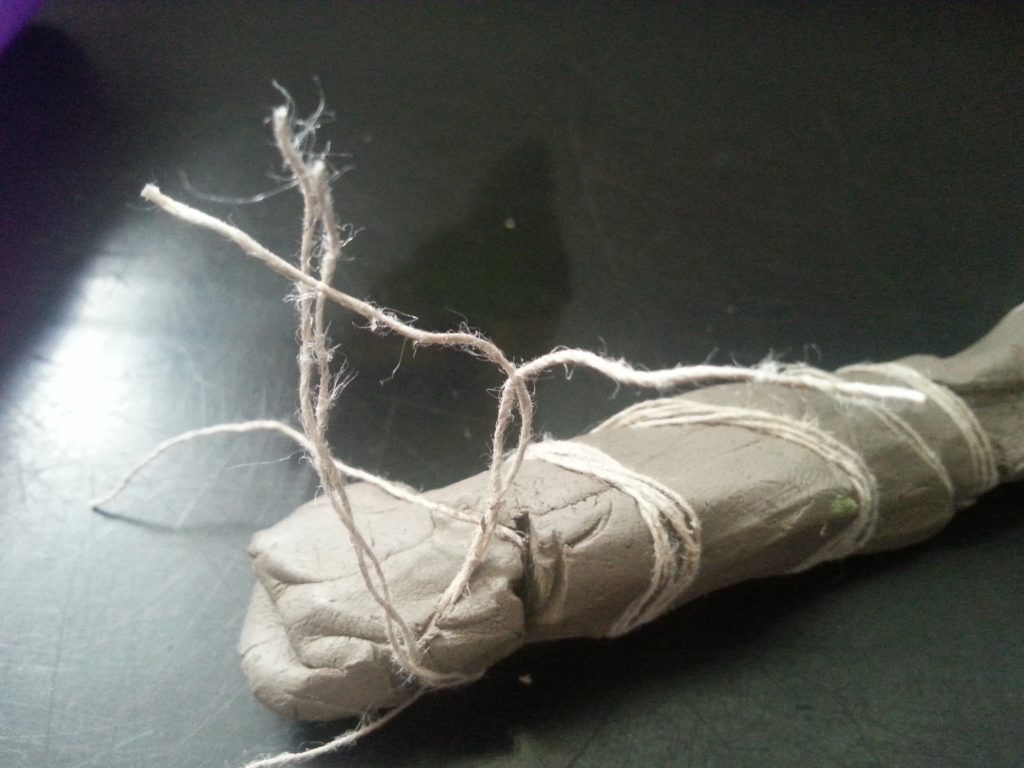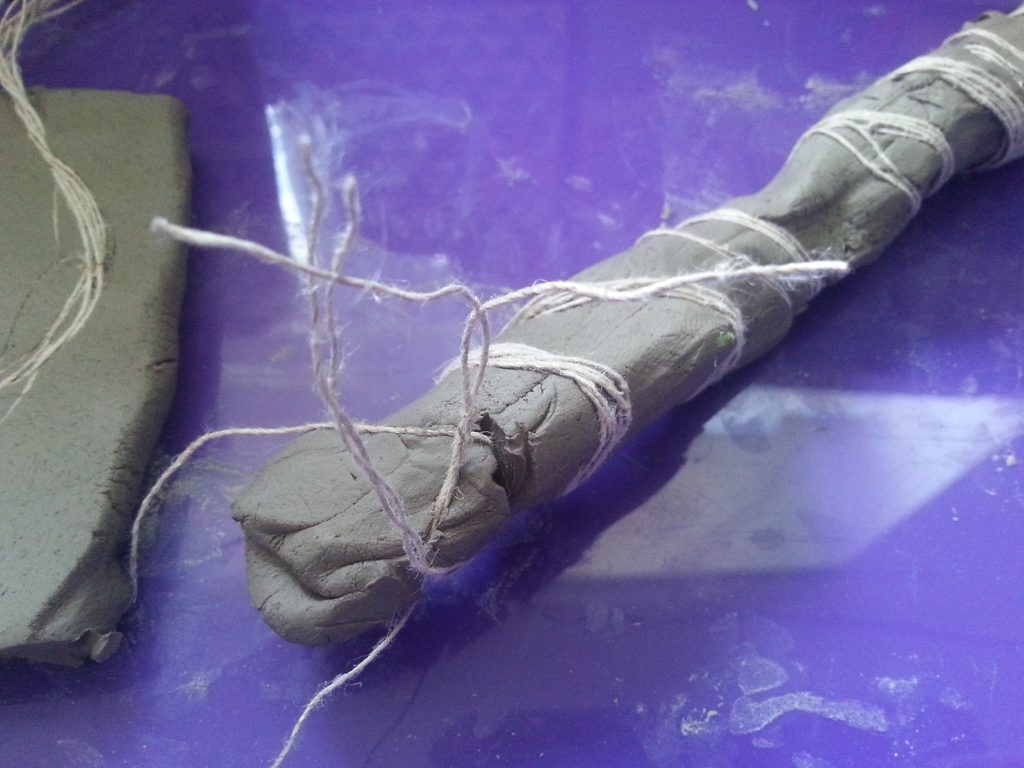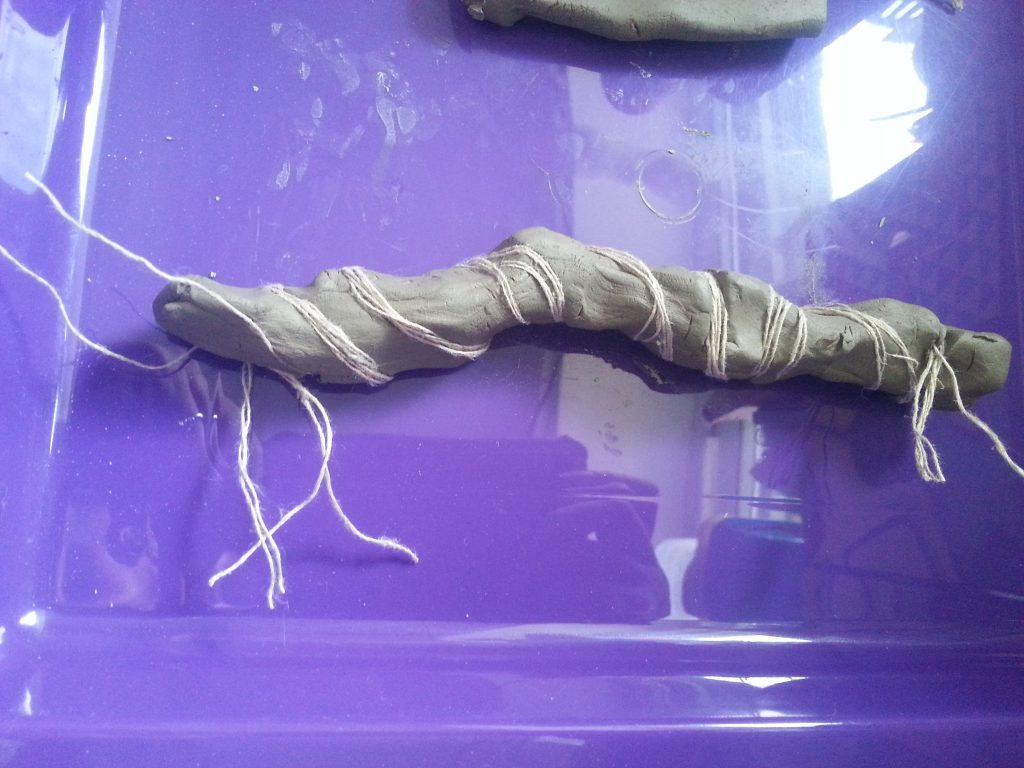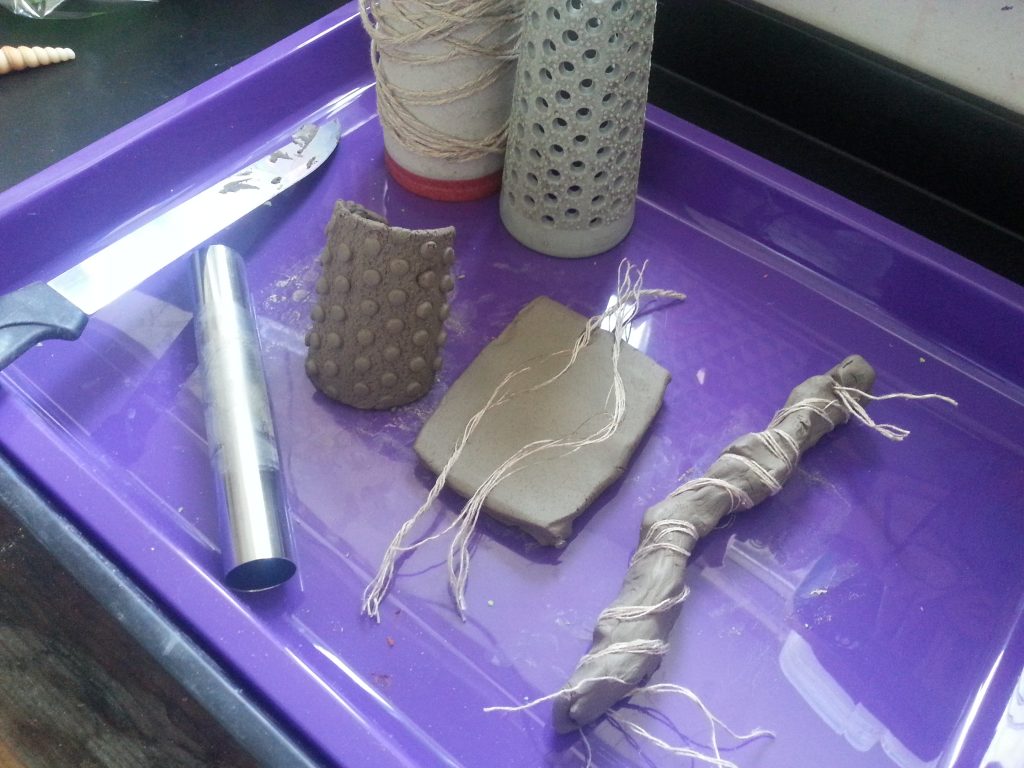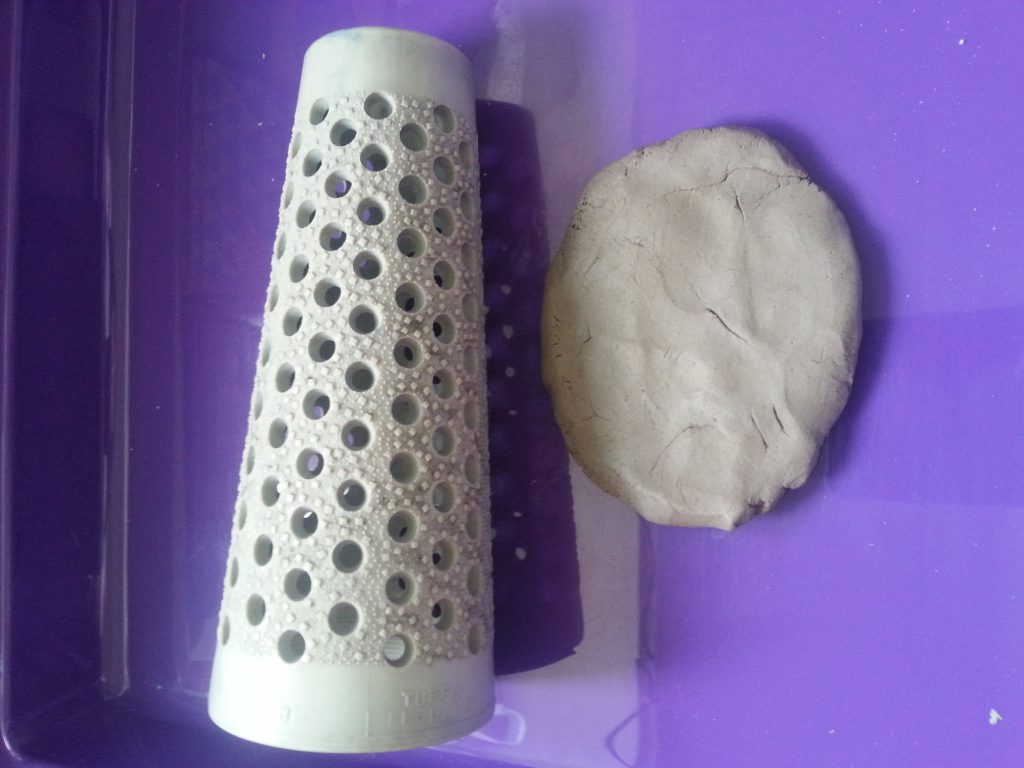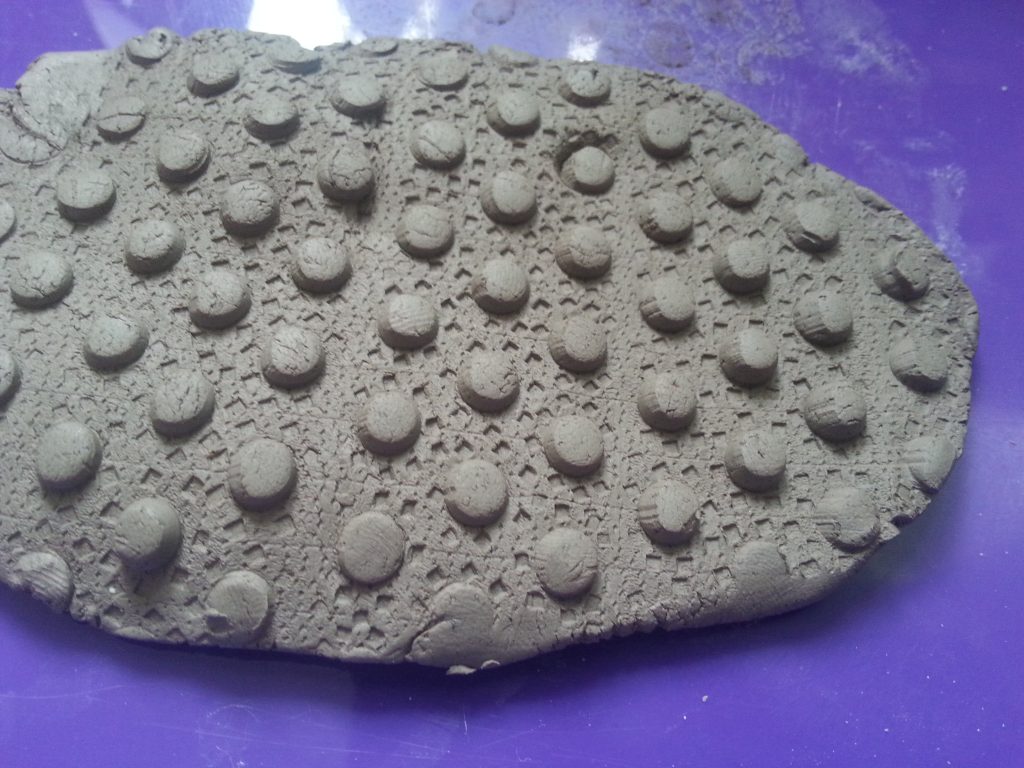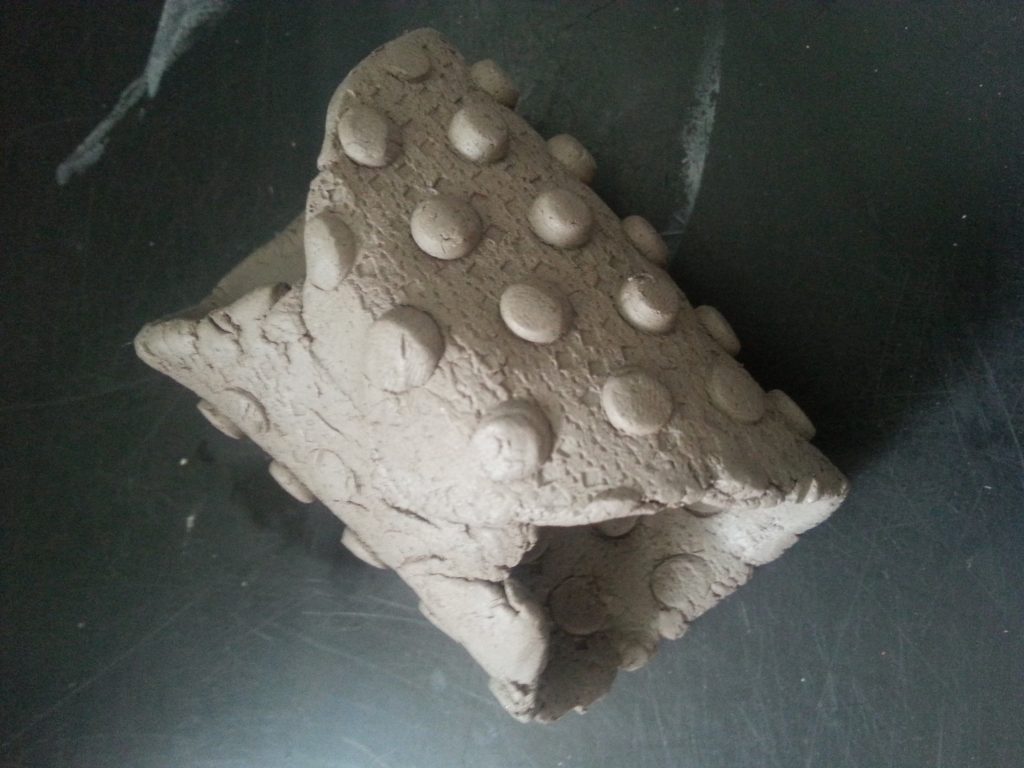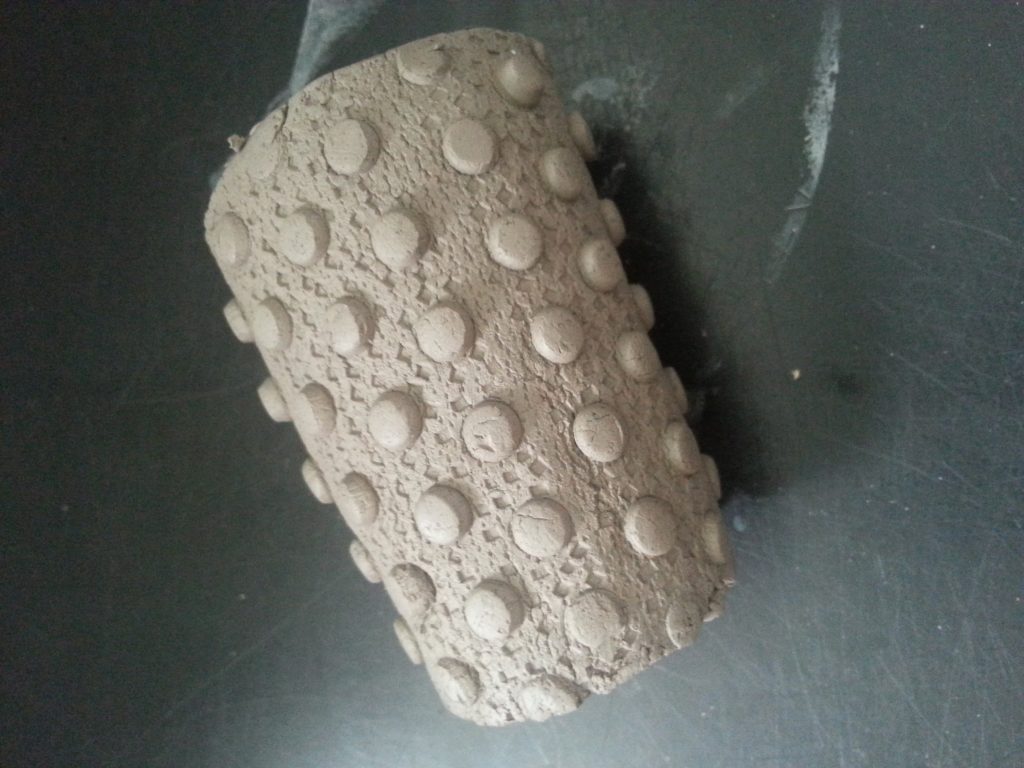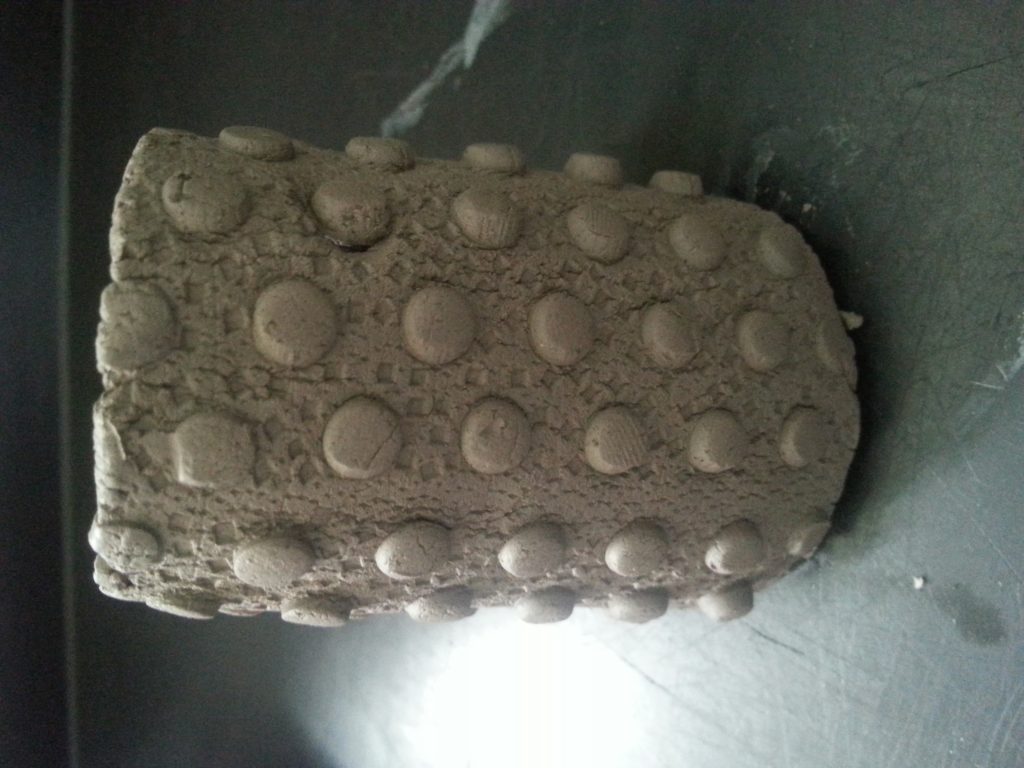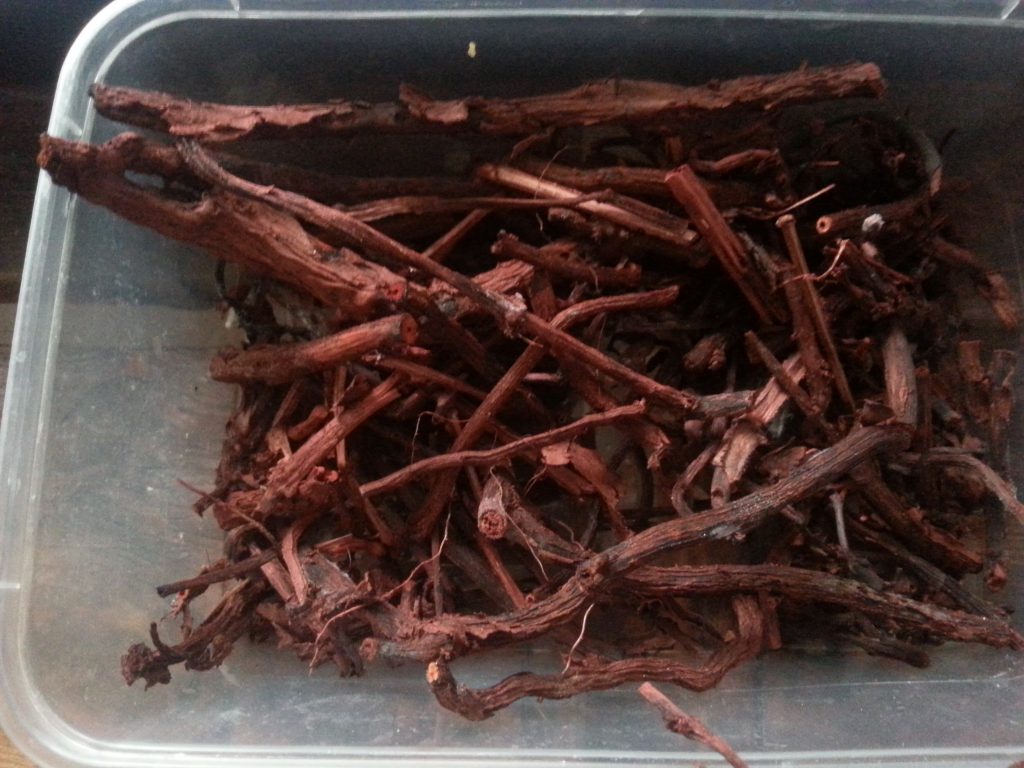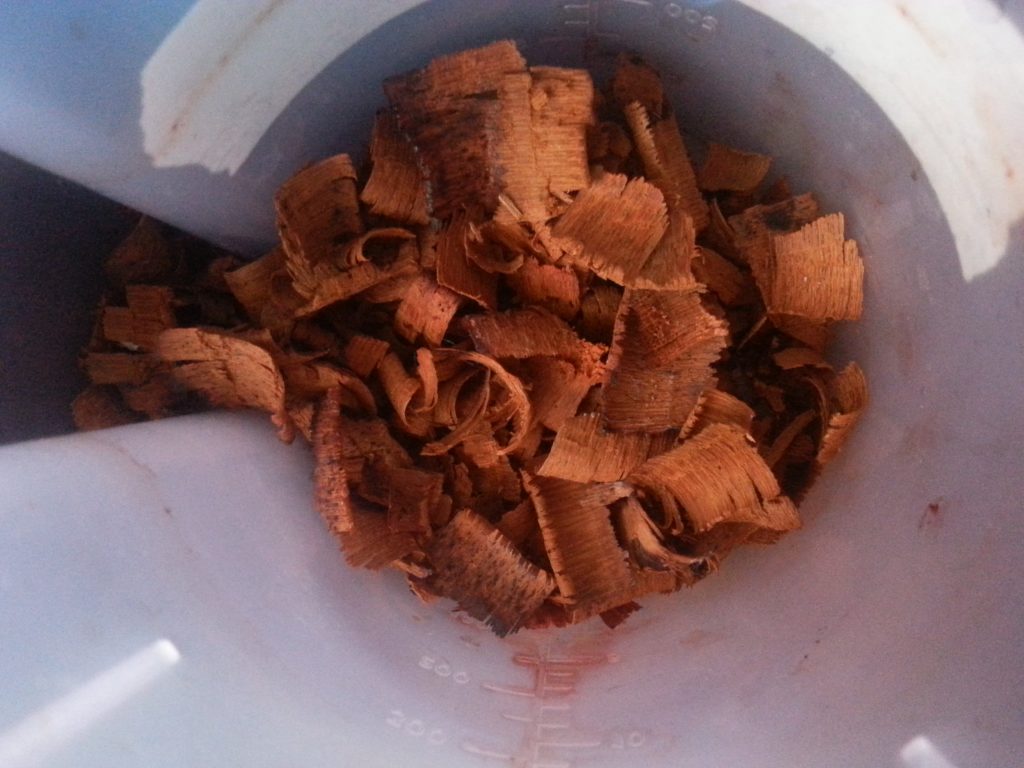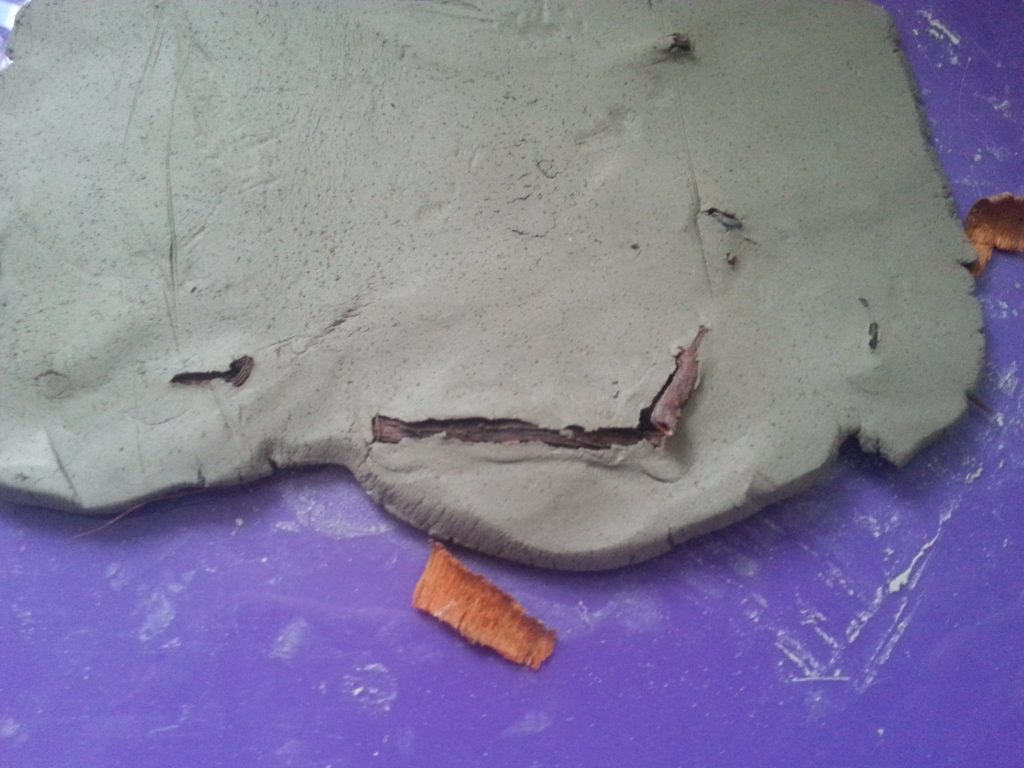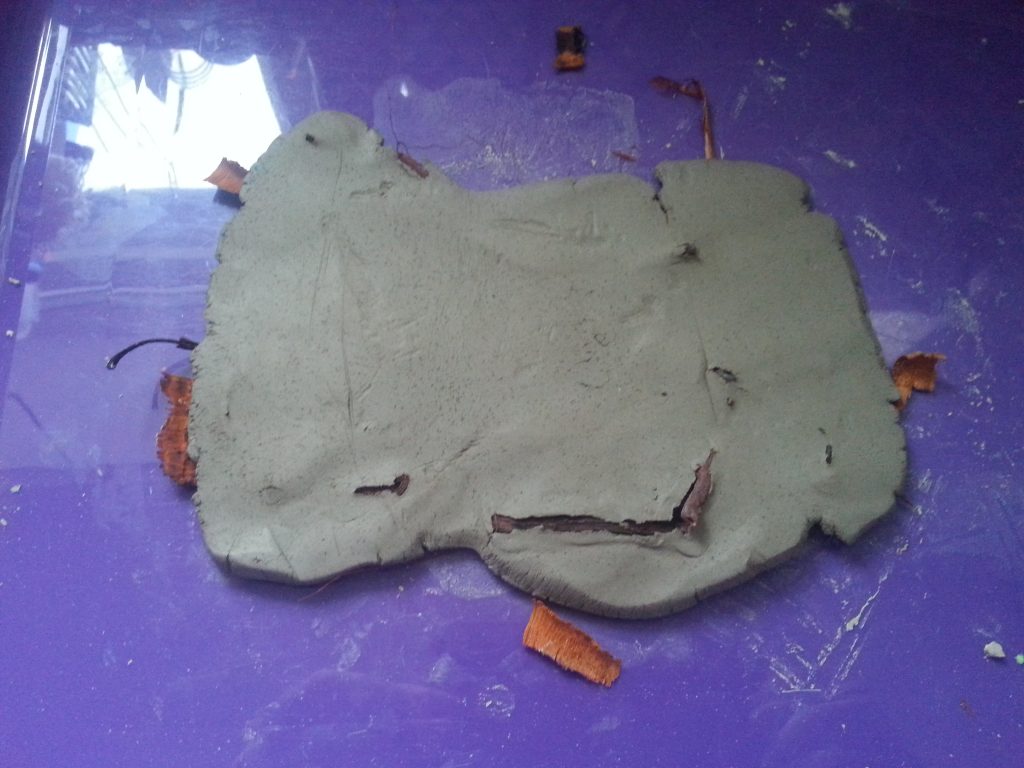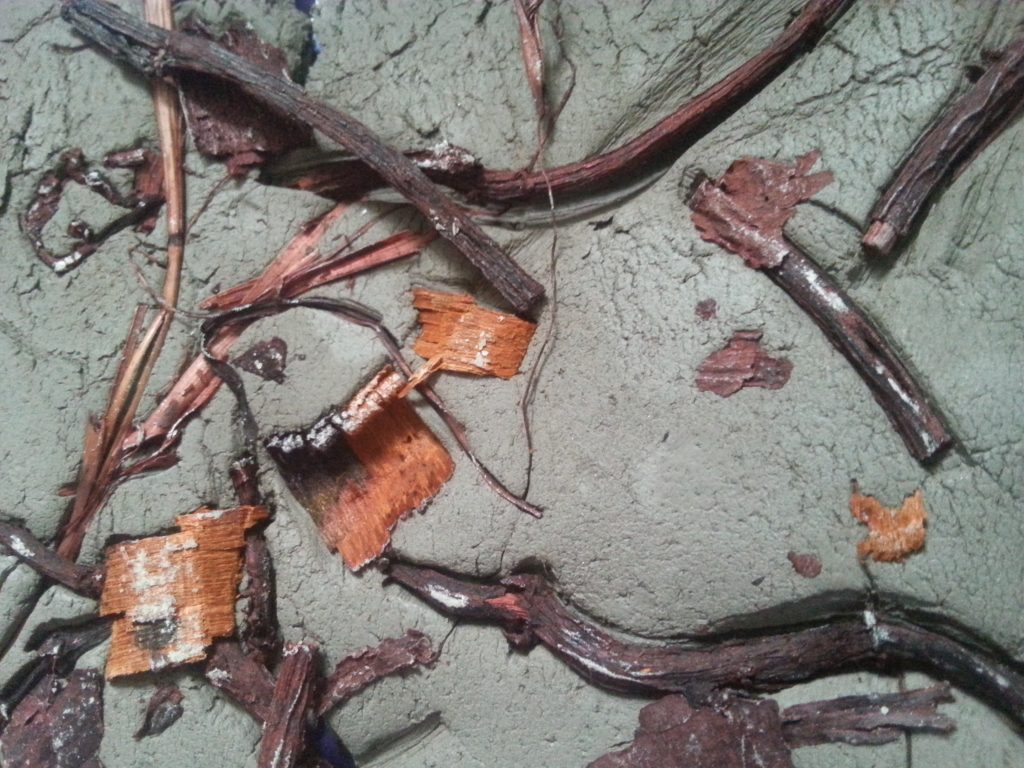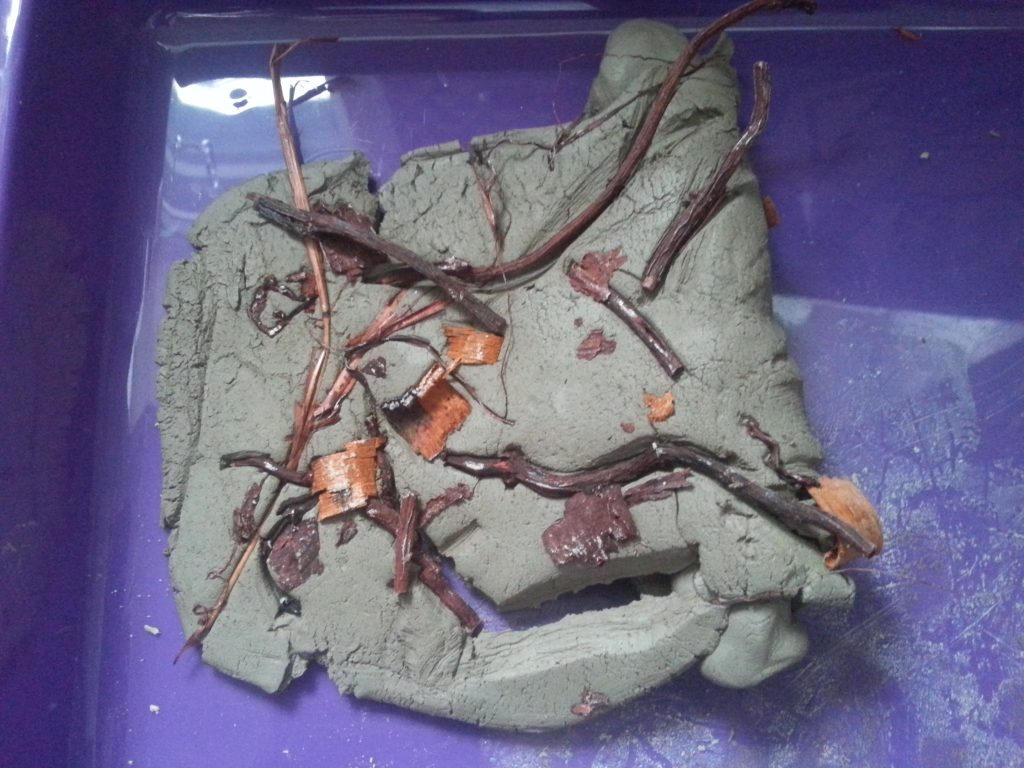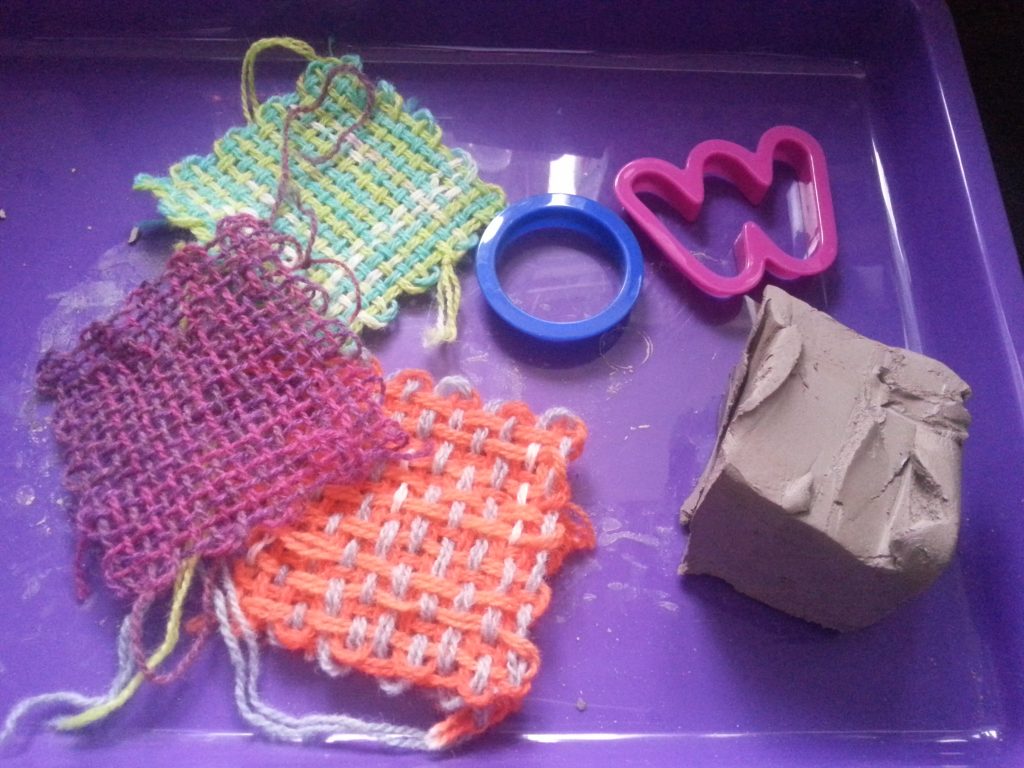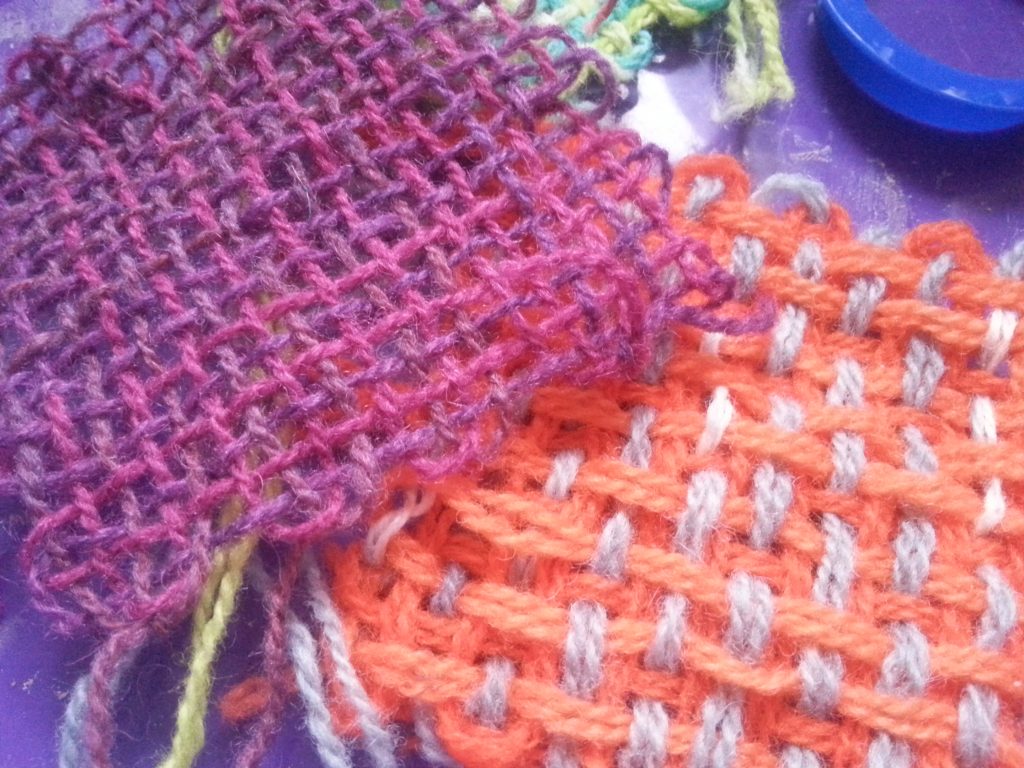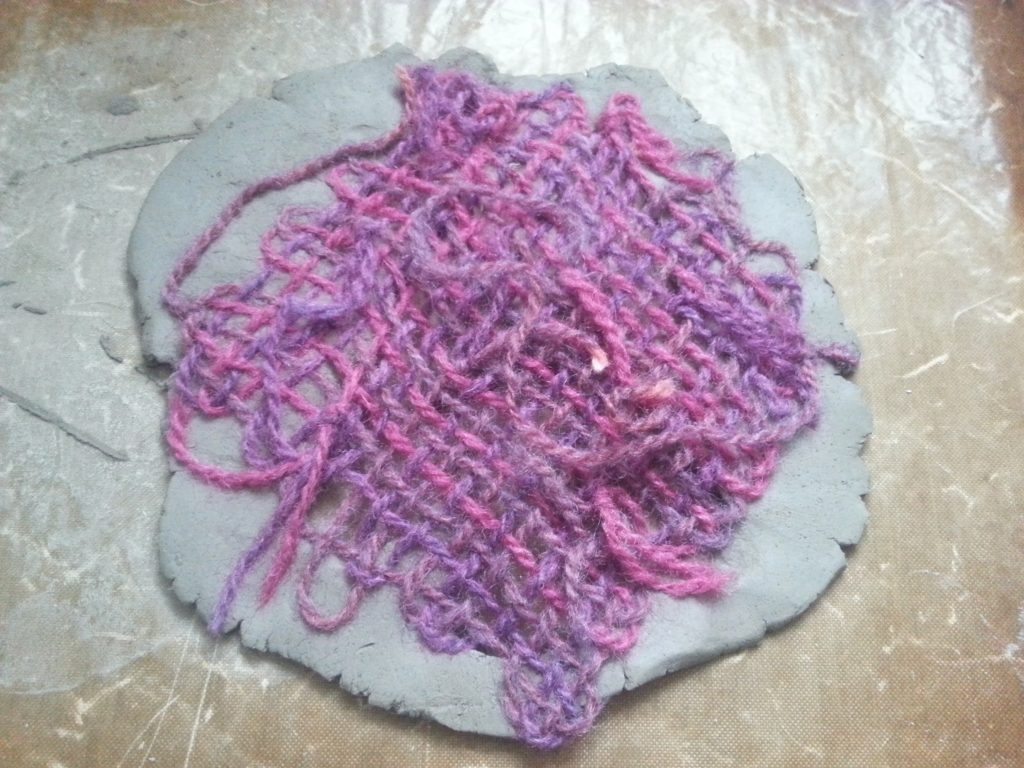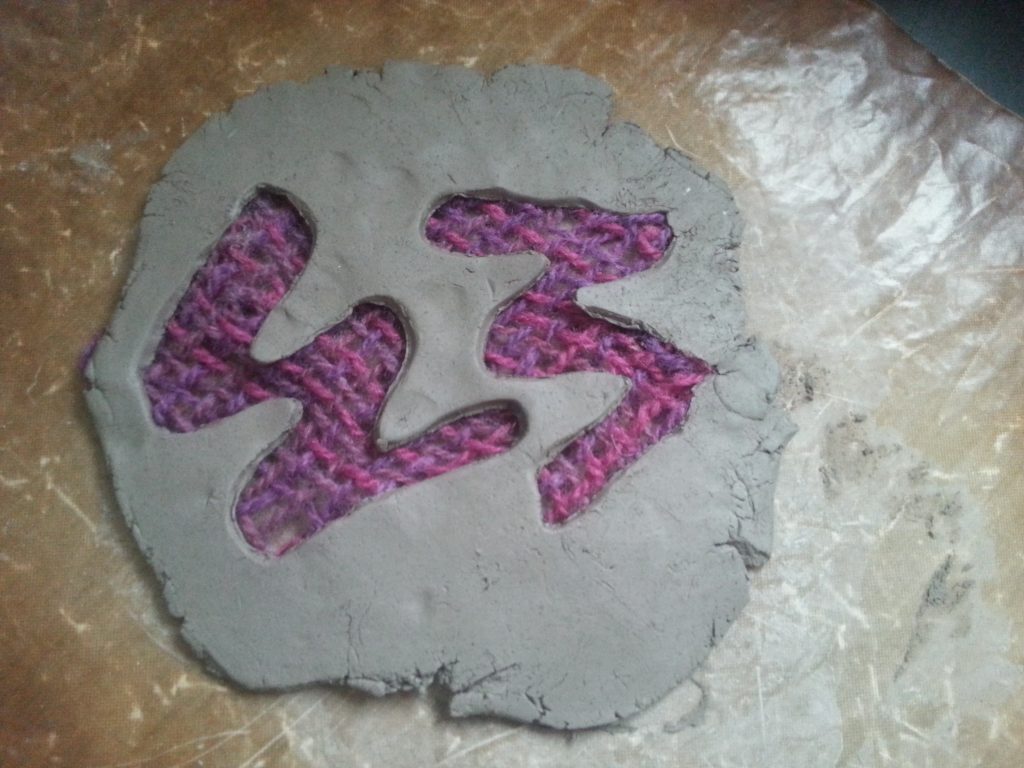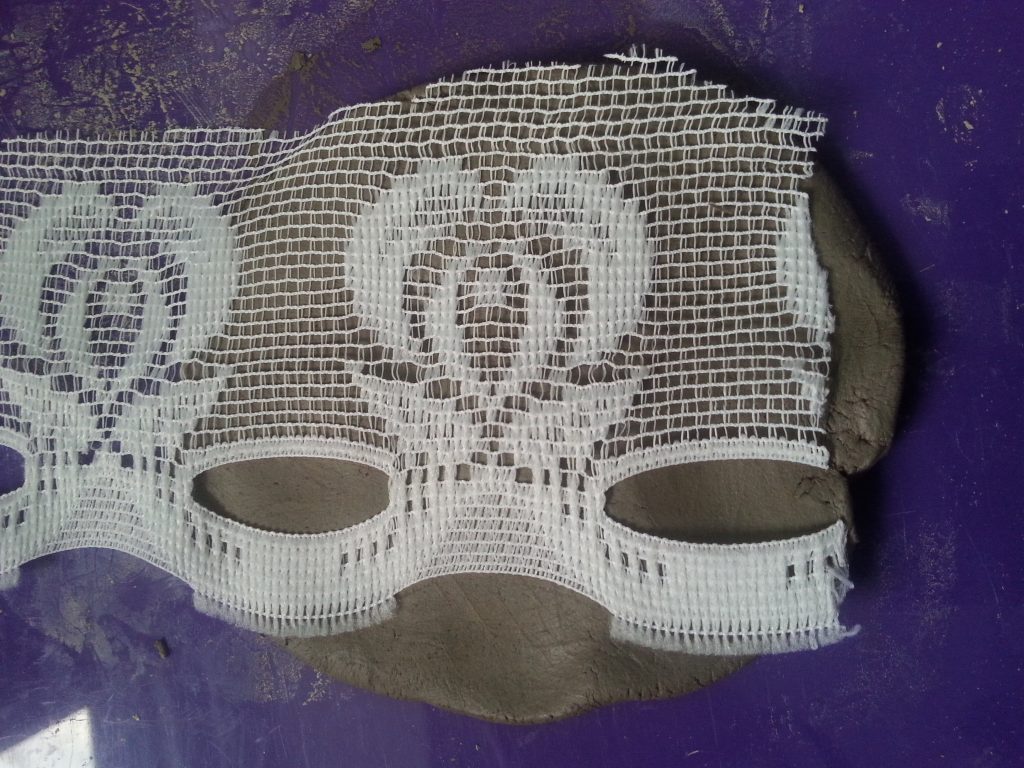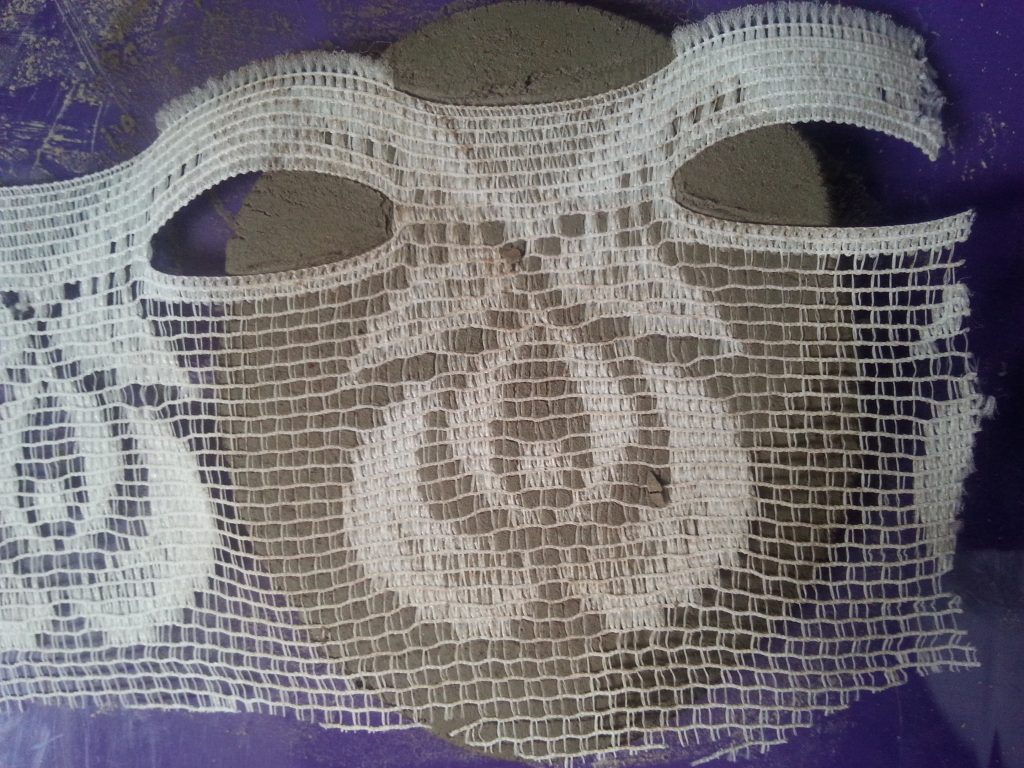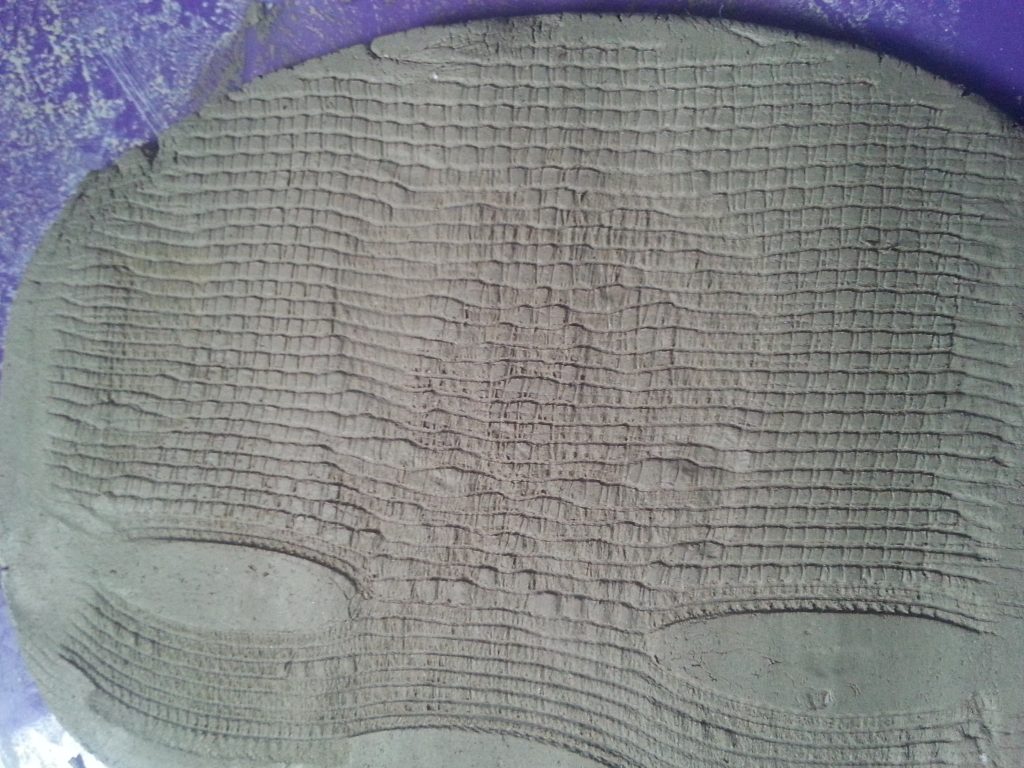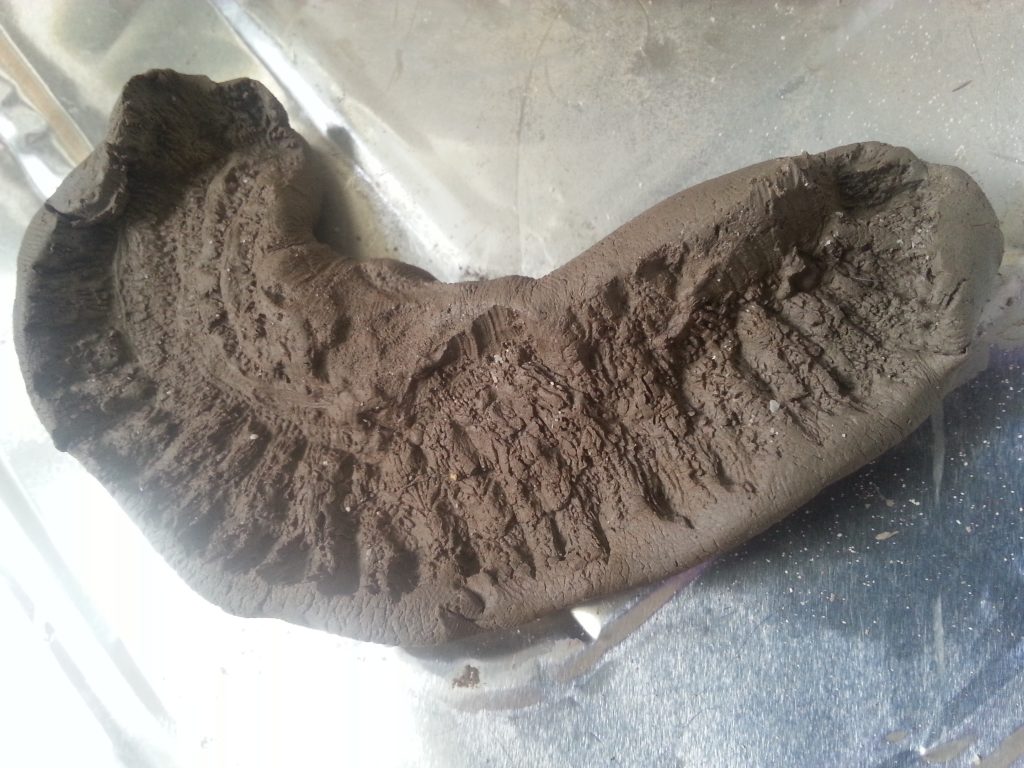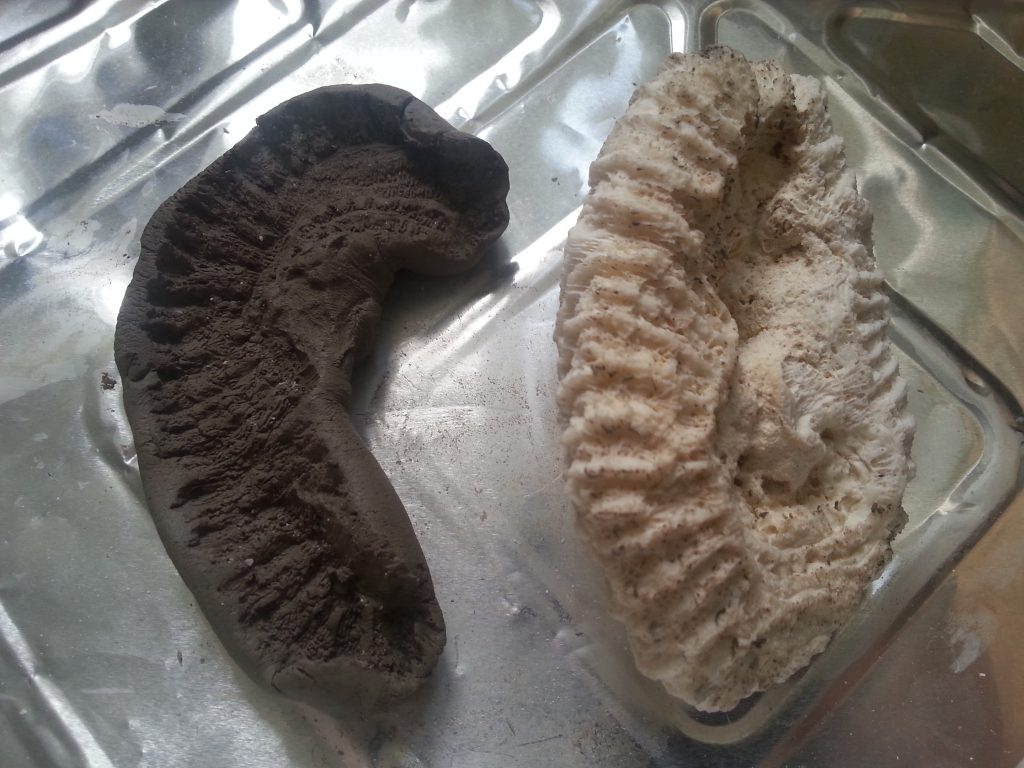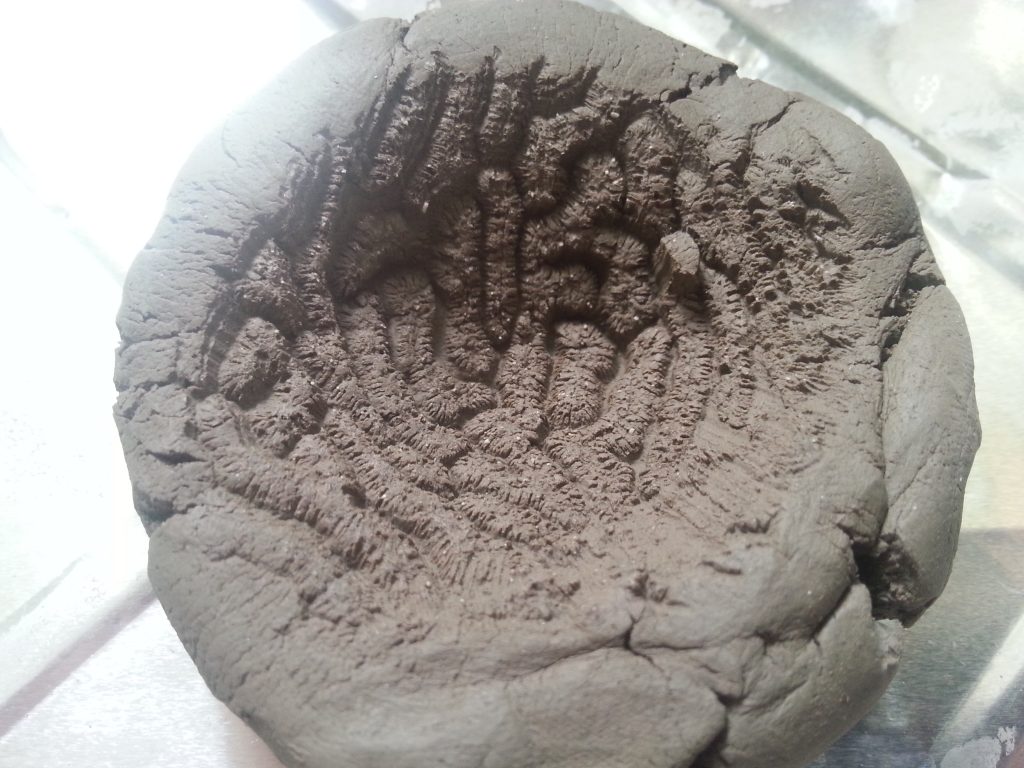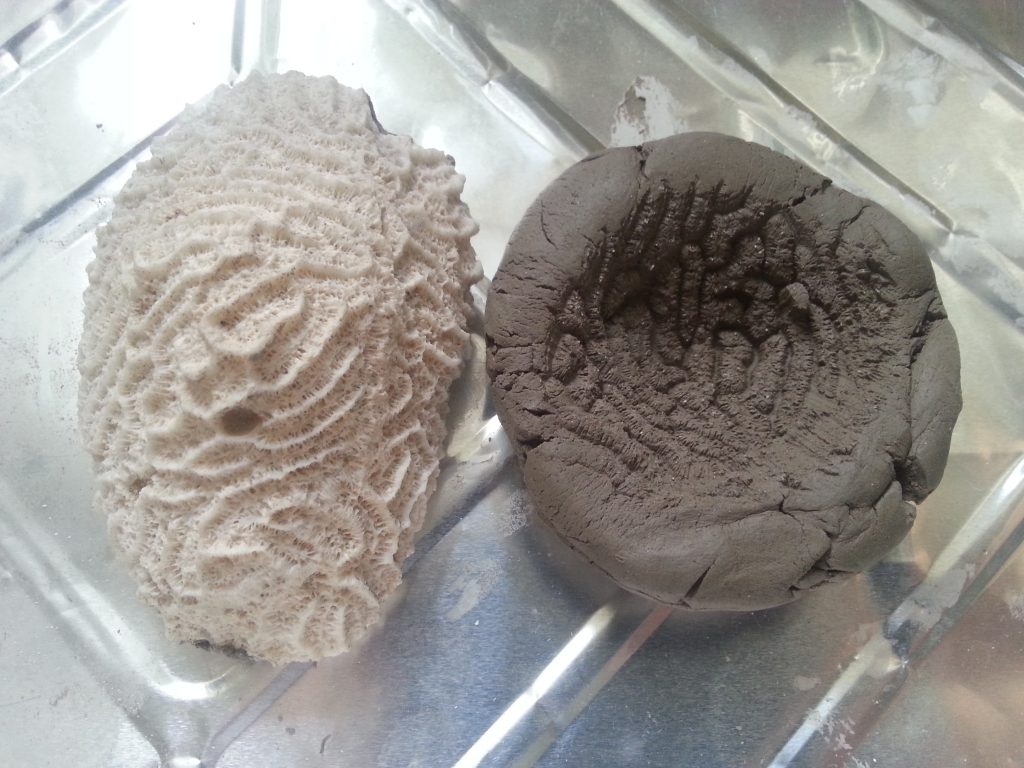For this exercise I organised a range of materials to make impressions on/embed in air-drying clay.
The clay is natural grey and does not obviously lend itself to colouration (possibly painting post-drying?). For the first samples I therefore selected remnants of a rough cotton rug warp in a natural stone colour to harmonise with the clay.
Air-drying clay and natural cotton rug warp
I experimented with wrapping the yarn around the clay, twisting and squeezing the clay to give added texture and a gnarled, twig-like appearance.
I further tried simply rolling the clay flat, laying the yarn on top and rolling again to embed the yarn.
Air-drying clay and knitting yarn cone
I found an empty plastic knitting yarn cone in my resources cupboard and it had a most interesting surface texture. Initially I simply pressed the clay into the cone but this didn’t pick up all the texture and was rather unimpressive. So I flipped the process on its head and wrapped the clay around cone and rolled it, using the cone as a textured rolling pin. This was much more effective and gave some excellent texturing. I produced where the clay was allowed to dried flat and curved into a rough tube. I like both of these. There is plenty of scope to add shaping or join pieces or embed items whilst the clay remains soft as it stays soft for around 24 hours.
Air-drying clay and dyestuffs
For the next samples I used leftover dyestuffs (madder roots and logwood chips), dried out after using for dyeing, to embed into the clay. This was a little tricky as there was a fine balance between getting a good, secure ‘take’ and breaking up the delicate pieces of dyestuffs. It may be necessary to find a way to anchor these in position, maybe with a coating of matte ModPodge or similar?
Air-drying clay and weavette samples
As part of my research I enjoyed studying the work of a number of artists who embed fabrics in concrete/clay. Inspired by their work, I wove a number of samples on the small weavette loom, using leftovers of hand-dyed wool yarn. I rolled a flat piece of clay, leaving the edges intentionally unfinished. I then cut shapes using cookie cutters and pressed the woven sample into the reverse of the piece. Viewed from the right side, the woven fabric is visible in the windows created by the cookie-cut shapes.
Air-drying clay and fabric
Following on from the weavette samples I used a piece of scrap lace fabric to create impressions of the lace structure in the clay. The lace was quite dense so the impression wasn’t as detailed as I would have liked. Perhaps stiffening the fabric with starch spray would have created a firmer fabric to boost the quality of the impression.
Air-drying clay and coral
For this sample, I used a piece of coral to make a simple impression in the clay. I took a mould of the centre section and the underside edge. The clay picked up quite a lot of detail. It would be interesting to see if it is possible to use the clay as a mould, however, it would be necessary to work out how to extract the cast.
- Coral and clay
- Coral and clay
- Coral and clay
- Coral and clay
